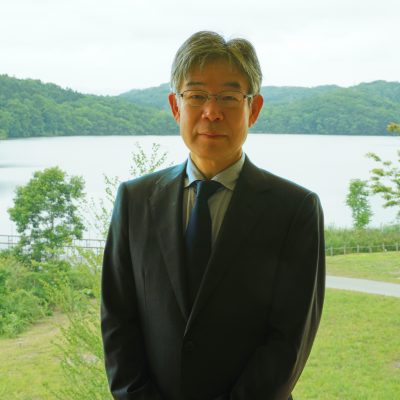About The Museum
Message from the Executive Director
The National Ainu Museum is the first national museum to come into existence in Japan specializing in the research and display of Ainu culture. It was established to revive and further develop the culture of the Ainu people.
The museum is a part of Upopoy (the Symbolic Space for Ethnic Harmony), a national project that seeks to revive and further develop Ainu culture as a “valued culture of our country” and build a “vibrant society with a rich and diverse culture free from discrimination” that respects the dignity of Indigenous Peoples. As a core facility of Upopoy, the National Ainu Museum seeks to uphold its mission “to respect the dignity of the Ainu as an Indigenous People, promote correct knowledge and understanding concerning Ainu history and culture at home and abroad, and contribute to the further development and creation of new Ainu culture”. It carries out exhibits of Ainu culture, research, educational programs, human resource development, and collection management.
The Ainu people and Indigenous Peoples around the world have all experienced a painful era in which, through state policies, they were dispossessed of the land and resources that formed basis of their livelihoods, they were forbidden to use their unique languages, and they suffered unjust discrimination. In this process, it was not uncommon for their invaluable culture to be at risk of disappearing. However, even in the face of such adversity, many Indigenous Peoples continued to steadily hand down the traditions of their culture, create museums themselves, and seek to preserve and revive the culture that is a mooring for their identity. The Ainu people are one such Indigenous People, and a museum called The Ainu Museum was founded here in Shiraoi by the Ainu themselves and operated for over 30 years. This museum profiled Ainu culture through exhibits and performing arts, and carried out cultural exchange with Indigenous Peoples from around the world.
The Ainu Museum’s history ended in March 2018 due to the construction of Upopoy, but the spirit of the museum lives on in Upopoy and its core facility, the National Ainu Museum. Cultural revival and creation, and harmony between diverse ethnic groups are like the two wheels of a car and the synergetic effects of these activities will revitalize society as a whole. In this new national museum, the Ainu people are the agents and will take up its mission, but at the same time, people from diverse ethnic groups around the world can gather here with Ainu culture as a point of contact and participate in its revival and creation. Through this process, we aim to contribute to the revitalization, not only of Japanese society, but of human society as a whole.
Upopoy and the National Ainu Museum opened on 12 July 2020, three months later than scheduled due to the spread of the new coronavirus. We sincerely ask for your continued support and cooperation.
July 2020
Shiro Sasaki
Executive Director, National Ainu Museum

Philosophy
The National Ainu Museum seeks to promote respect for the Ainu as an indigenous people in Japan, to establish proper recognition and understanding of Ainu history and culture both nationally and internationally, and to contribute to the creation and development of new Ainu culture.
Establishment of the National Ainu Museum
Information on the establishment of the National Ainu Museum can be found on the Agency for Cultural Affairs website.
Museum network
The National Ainu Museum brings together practitioners and protectors of Ainu culture, museums, universities and research institutions in Hokkaido and beyond. It promotes co-operation and collaboration to share and disseminate information, collect data, and conduct joint research. The museum also works in collaboration with museums all over Japan to assist in the recovery and restoration of cultural properties affected by natural disasters.
Ainu language within the museum
Ainu is used as the first language for explanatory panels and signage throughout the museum.
☆Ainu language notation
The Ainu language can be written using both katakana and the Latin alphabet and no single definitive orthography system currently exists. For this reason and to ensure consistency, all displays within the museum have been transcribed in katakana based on Akor Itak, an Ainu language textbook edited and published by the Ainu Association of Hokkaido.
☆Ainu language explanations and linguistic variations
The museum displays have been written by people from a range of linguistic traditions based in different areas. In order to preserve linguistic diversity within the Ainu language, these displays reflect the style and notation of their respective authors.

